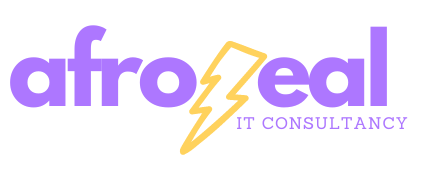People expect pages to load instantly. When they don’t, trust and patience disappear fast. Website speed affects everything: rankings, bounce rate, conversions, and brand perception. Fixing performance is one of the highest-ROI things you can do for a business website.
How slow sites hurt your business (real-world effects — plain talk)
- Lost customers: Visitors click away if pages feel slow or clunky. Fewer visitors → fewer leads → fewer sales.
- Lower search visibility: Search engines prefer fast pages. Slow sites can rank lower for your target keywords.
- Worse conversions: Slow checkout or contact pages reduce form submissions and completed purchases.
- Bad brand experience: Slow pages feel unprofessional — users judge your whole business by speed.
- Higher ad costs: Paid campaigns are less profitable if landing pages load slowly (higher bounce → lower Quality Score).
What to measure first (the simple checklist)
Before you touch a single file, measure. Use these:
- PageSpeed Insights or Lighthouse — gives a performance score and actionable suggestions.
- Core Web Vitals — LCP (Largest Contentful Paint), CLS (Cumulative Layout Shift), and responsiveness metric (look for the current responsiveness metric in your tools).
- Field data (Real User Monitoring) — check Google Search Console or GA4 for how real users experience your site.
- Synthetic tests — run tests from multiple locations (desktop and mobile).
Measure now, then measure again after each change to prove the improvement.
Quick wins you can do in under 60 minutes
These fixes move the needle fast and are easy to implement:
- Compress & resize images
- Resize images to the dimensions shown on the page. Save as WebP (if supported) or optimized JPEG/PNG.
- Use lazy-loading for below-the-fold images:
<img loading="lazy" src="...">.
- Enable browser caching & compression
- Turn on gzip or Brotli on the server. Set long
cache-controlheaders for static assets (images, CSS, JS).
- Turn on gzip or Brotli on the server. Set long
- Minify CSS, JS, and HTML
- Remove whitespace and comments. Use build tools (webpack, vite) or plugins for CMSs.
- Defer non-critical JS
- Use
deferorasyncattributes for scripts, and move heavy scripts to the bottom.
- Use
- Limit third-party scripts
- Remove or delay analytics, chat bots, and ad tags that block rendering. Load them asynchronously.
- Use a CDN
- A Content Delivery Network serves files from servers closer to users — big speed win for international traffic.
Advanced fixes that compound gains
These require more setup but deliver big improvements:
- Serve critical CSS inline for above-the-fold content and defer the rest.
- Use server-side caching and object caching (Redis, Memcached) for dynamic sites.
- Switch to HTTP/2 or HTTP/3 if your host supports it — better multiplexing and faster delivery.
- Preconnect / Preload important resources (fonts, API endpoints) using
<link rel="preconnect">or<link rel="preload">. - Font optimization: Use
font-display: swap, subset fonts, and self-host critical fonts. - Reduce DOM size: Simplify heavy pages — fewer elements render faster.
- Critical images: Use
content-visibility: auto;where supported to reduce rendering cost. - Server improvements: Fast PHP versions, upgraded hosting plan, or switching to a managed host (if current host is slow).
Step-by-step plan you can follow
- Run PageSpeed Insights and record baseline scores (mobile + desktop).
- Fix images and enable compression. Re-test.
- Enable caching and CDN. Re-test.
- Defer non-critical JS and remove blocking third-party scripts. Re-test.
- Tackle Core Web Vitals issues (LCP: optimize hero image or server response; CLS: reserve image/ads space; responsiveness: reduce long tasks).
- Set up RUM (Google Search Console field data, GA4) to monitor real users.
- Repeat optimization monthly for new pages/features.
How speed improvements help revenue
- Faster pages = more engaged visitors. A well-tuned page keeps users browsing longer and clicking “Contact” or “Buy”.
- Example messaging for clients: “A 1-second improvement in load time noticeably increases conversions and decreases bounce.
Technical checklist (for developers)
- Compress images, convert to WebP, lazy load.
- Enable gzip/Brotli on server.
- Add
cache-controlheaders. - Minify resources and bundle smartly.
- Use
defer/asyncfor JS, remove render-blocking CSS. - Use CDN and HTTP/2 or HTTP/3.
- Optimize fonts with
font-display: swapand subsetting. - Reserve space for images/ads to avoid CLS.
- Monitor Core Web Vitals and set alerts.
SEO optimization tips for this blog (how to rank for “website speed”)
- Primary keyword:
website speed— use in title, first paragraph, one H2, and naturally across the post. - Related phrases:
speed optimization,page load time,improve website speed,Core Web Vitals— sprinkle as subheadings and in alt text. - Meta title & description (already at top). Keep them unique for each page.
- Schema: Add
HowToorArticleschema to highlight steps and increase chances for rich snippets. - Internal links: Link to services like
/seo-services-addis-ababaor/web-design-addis-ababaand to a case study page. - Images: Include 1–2 screenshots (before/after) with alt text:
before and after website speed optimizationand compressed file names likewebsite-speed-before.jpg. - Readability: Break long paragraphs, use lists and short sentences (we did that here).
- CTA: prominent, above the fold and at the end (see below).
FAQs (short answers you can include at the end)
Q: How fast should my website be?
A: Aim for visible content in under 2.5 seconds on mobile and a Lighthouse performance score above 80 as a practical target — but prioritize improving core metrics like LCP and CLS.
Q: Will a new theme make my site faster?
A: Sometimes. Choose lightweight, well-coded themes and avoid feature-bloated options. Test before switching.
Q: Is expensive hosting necessary?
A: Not always. Good configuration and caching often beat raw price. But if server response time is slow, upgrading helps.
Call to action
Want a free 20-minute website speed audit? I’ll run a quick test, show 3 immediate fixes, and estimate impact on your traffic and conversions.
Book your free audit






